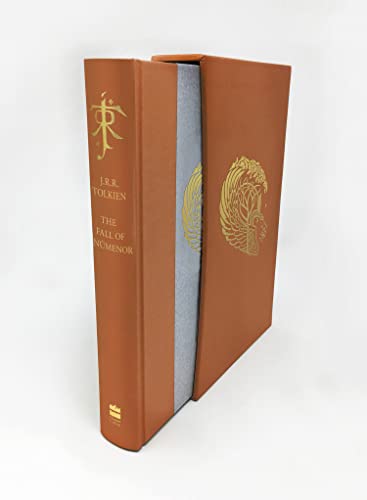Letters  Back to results
Next
Back to results
Next
Next
 Back to results
Next
Back to results
Next
TCG Letter #1528
From
J.R.R. Tolkien
To
H [Humphrey]. Cotton Minchin
Date
16 April 1956
Type
Autograph Letter Signed
Transcript
Complete
As with Tolkien's draft of this letter,Carpenter #187: Letter from J.R.R. Tolkien to H [Humphrey]. Cotton Minchin • 16 April 1956 (#243)[1] this letter opens with Tolkien's ackowledgment of Minchin's suggestions and his note that he is now more than ever under enormous pressure to finish long promised volumes.
He reduces the mention of maps and simply asks Minchin to send notes on "faults, inconsistencies, or omissions, in maps or text."
Tolkien describes himself as a philologist, and sometime calligrapher. An index of Elvish names was intended to be produced, noting that his 'specialist' volume would have been largely about linquistics.
Tolkien describes himself as a philologist, and sometime calligrapher. An index of Elvish names was intended to be produced, noting that his 'specialist' volume would have been largely about linquistics. He goes on to mention that he worked for months on some facsimile images of the 'Book of Mazarbul', which modern readers will not look at when reading their copies, but time and costs prevented the inclusion of them, along with much of his material on Elvish languages.
Tolkien then notes the various informations that readers are asking for. Geological, Elvish grammah, musical notations, archeology. Others want information on political and historical matters, on ceramics, botony, and on. Tolkien says though that his wish is to conclude the matter of his Silmarillion. He says that it will result in a very large volume.
He is astonished by The Lord of the Rings success, as is the publisher. It is selling very well, inspite of the costs. Tolkien is very pelase that Minchin has welcomes the volumes, noting that they cost around £4,000 to produce and that has to be repaid before he sees any profits.
He calls the Synopsis a nuisance and does not see the value in them and explains that the only seperation intended was the 6 books within a single volume.
He then concludes with some matters on names, his own origins, and gives a commentary of Cotton.
He reduces the mention of maps and simply asks Minchin to send notes on "faults, inconsistencies, or omissions, in maps or text."
Tolkien describes himself as a philologist, and sometime calligrapher. An index of Elvish names was intended to be produced, noting that his 'specialist' volume would have been largely about linquistics.
Tolkien describes himself as a philologist, and sometime calligrapher. An index of Elvish names was intended to be produced, noting that his 'specialist' volume would have been largely about linquistics. He goes on to mention that he worked for months on some facsimile images of the 'Book of Mazarbul', which modern readers will not look at when reading their copies, but time and costs prevented the inclusion of them, along with much of his material on Elvish languages.
Tolkien then notes the various informations that readers are asking for. Geological, Elvish grammah, musical notations, archeology. Others want information on political and historical matters, on ceramics, botony, and on. Tolkien says though that his wish is to conclude the matter of his Silmarillion. He says that it will result in a very large volume.
He is astonished by The Lord of the Rings success, as is the publisher. It is selling very well, inspite of the costs. Tolkien is very pelase that Minchin has welcomes the volumes, noting that they cost around £4,000 to produce and that has to be repaid before he sees any profits.
He calls the Synopsis a nuisance and does not see the value in them and explains that the only seperation intended was the 6 books within a single volume.
He then concludes with some matters on names, his own origins, and gives a commentary of Cotton.
Next





 9
9 2479
2479